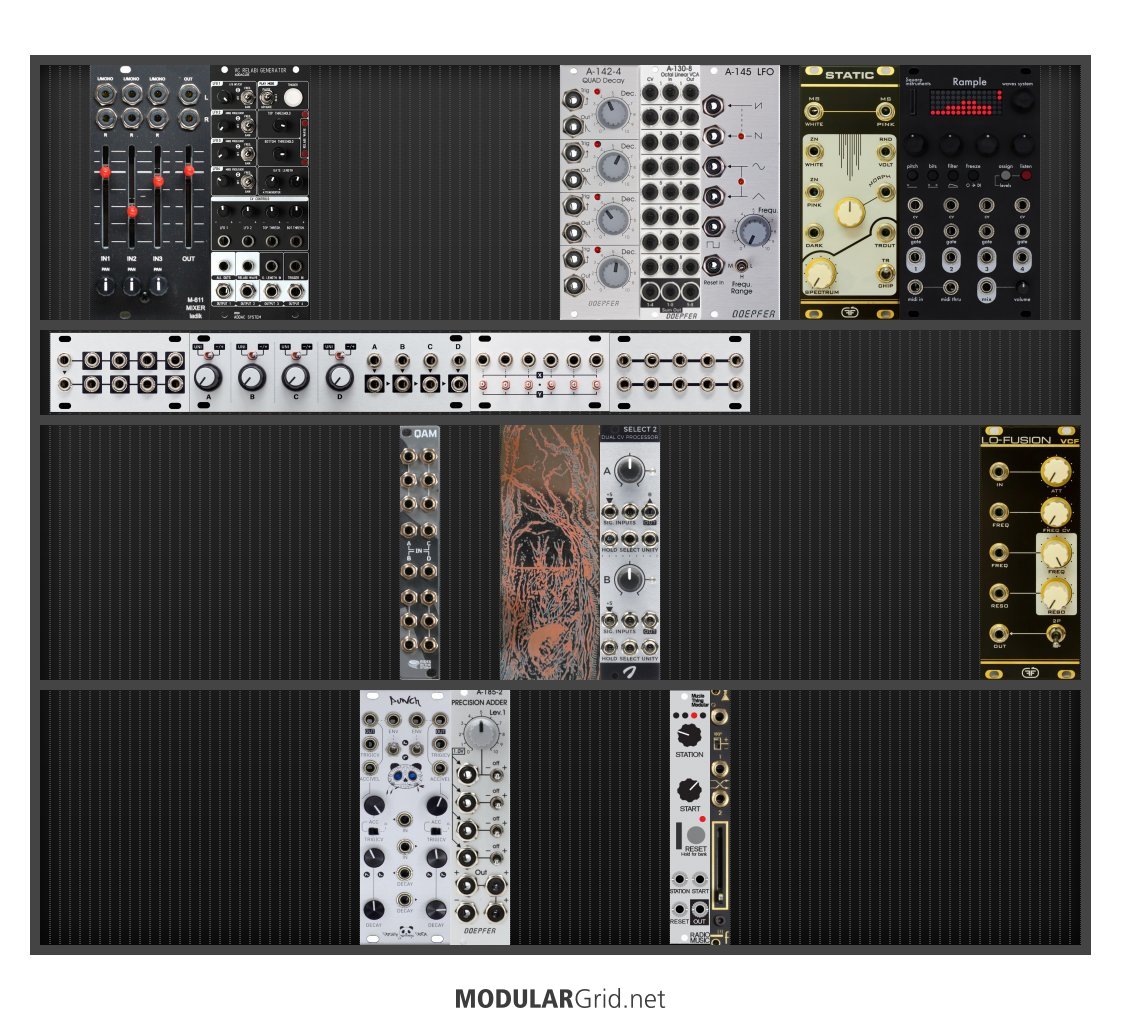Hello,
I did some more research and validation on VCV Rack and here's what I'm looking at now. BTW, Jim, your signature is completely right. If sound sources are the organs, effects the muscles and sequencers the brains, then utilities are the skeleton. It's been a very enlightening week.
For the case - you were right that a single 84HP row is much too limiting. I looked at cases and because the Mantis is currently hard to get, I found the Intellijel 7U 104HP stealth case, which is portable and has feet and some external connections. It's double the price of the Mantis, but with its metal build and lid, I like it a lot.
New version is here: 
This is the basic version. I made a full version, which I'll link to at the bottom. That came out at over $6000, which is way beyond what I want to spend. So I stripped it down, mostly by removing features (some oscillators, the stereo bit) and sometimes by replacing bits by more cost effective parts (like the Droid for the Temps Utile or the chip osc + noise by a combo). That took the price down to about $2500, which is more manageable.
Top row is all utility. In this basic version, I'm using the Quadratt as the mixer. I like the idea of mixing patches with an external mixer, but on the road, I want to be able to output a single wire. I added the zeroscope for tuning and the occasional waveform check. It's much more cost-effective than a Mordax and I don't need much more. I filled it up with more utility that will always come in handy.
First 3U row has the Temps Utile, LFO, oscillators, a filter and the basic Befaco line+headphone out with cue.
Second 3U row has some randomness & and/or to take out beats at random, then clock div/mult. The Harmonaig is lots of fun - I played with it in VCV Rack. It's a keeper. The Zadar - if you can't tell: I like modules that are dedicated to one purpose, but offer lots of functionality within that scope. So I won't be adding an O&C, but I do have the FX AID (great suggestion!). Finally, a fun spring to round it off.
As for playing it, I'm looking at a hardware sequencer, preferably with pads. I mentioned Torso T-1 but it's all sold out and unavailable until August... I'm going to be using it starting April so I'm looking at an alternative. The Beatstep Pro is on my list, as is the SQ-64 and a couple of others.
So what do you think of this new setup?
The full version adds Mutable Ears+Rings, some more OSCs, filters, fx & VCAs, stereo (delay for imaging and pan for the rest) and the pretty impressive Droid with some expansions from Der Mann Mit Der Maschine. I love how versatile it is, yet dedicated to CV production and manipulation. There's an extra 3U row which corresponds to a 3U 19" row I have available in my studio rack. In it, I have the modules from the basic setup that I replaced by higher end modules (Temps Utile and the Feedback Static) as well as audio and MIDI interfaces. Here it is:






